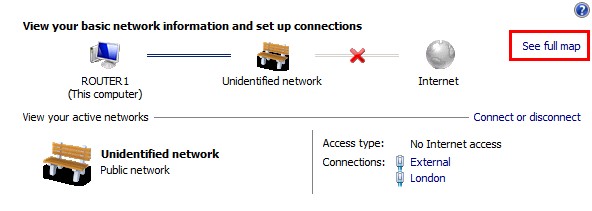Lab Setup for Microsoft Exam 70-642
This lab setup for Microsoft Exam 70-642 Windows Server 2008 Network Infrastructure, Configuring will test you in the following topics of the Windows Server 2008 R2 Operating System:
- Configuring IP Addressing and Services (21%) [IPv4, IPv6, DHCP, firewall and external protocols]
- Configuring Names Resolution (22%) [DNS, DNS and DNS]
- Configuring Network Access (18%) [Remote Access, NAP-Network Access Protection, NPS -Network Policy Server]
- Configuring file and print services (20%) [DFS and print servers]
- Monitoring and managing a network infrastructure (20%) [WSUS, event logging, performance monitor]
How do you prepare your environment for this exam? How many VMs do you need to setup in order to have a practical out-of-production-servers hands-on? Well, Microsoft doesn't tell and I'm no one to tell you what to do, but on the sections below I show you how I've done it
Hands on: Get DNS, Forest Root Domain Controller (FRDC) and deploy your test network
First of all, create our Hyper-V 70-642 VM and install on it the Hyper-V free version core edition from Microsoft, configuring that VM with the hard drives mentioned here. Once you got that done, copy the parent hard drives from the 70-643 VM to the 70-642 VM, and this is it, you're ready to start creating VM for this exam lab hands-on
Compact the parent disk if you like, but don't forget to set them read-only before creating additional VMs

1. Create a new VM called "DC01", and then create a differencing disk for it from the parent disk

2. Once you create the domain for our exam (ms642.internal), logon to our Hyper-V manager and add the host to the domain, then configure the "Automatic Start Action" of the VM to always start with the host, in order to provide authentication for it

3. Using Remote Desktop Connection Manager (version 2.7 here is the download: https://www.microsoft.com/en-gb/download/details.aspx?id=44989), create an .rdg file for our exam and ensure the "Drives" local resource are selected under the appropriate tab, given us access to our main computer where we got all the goodies downloaded and ready to go

4. On our DC, install the feature Remote Server Administrative Tools > "Hyper-V Tools" so we can manage our host from there

5.- Backup the "Default Domain Policy" GPO that we created on the 70-643 tutorial exam and import them into our DC01 for 70-642

6.- We would want to see a full map of the network regardless of the connection, so Turn On Network Mapping on Domain and Public Networks by modifying both entries of the Link Layer Topology Discovery (LLTD) the Discovery and the Responder found in Computer Configuration\Administrative Templates\Network\Link-Layer Topology Discovery
Remember that for a computer running XP you'd need to install the LLTD Responder on that computer
Remember that when you disable File Sharing on the profiles, you're also disabling the ICMP (Internet Control Message Protocol) meaning that the utilities part of this protcol - ping, tracert and pathping - will not work either
Remember to press the ALT key in order to view the menu and access the "Advanced Setting and Bindings" found under the ncpa.cpl or control netconnections window


To achieve the above, create initially two additional private networks on our HyperV, call them "London" and "Chicago", and add the rest as you go along and progress with the lab

Then on the VMs that function as routers, add Roles > Network Policy and Access Services > Routing and Remote Access Services > and check both Remote Access Service and Routing. Once this is completed, add the RipV2 protocol on all the RRAS console and add also the relevant interfaces for routing

And finally issue the route print command on your MgmtPC so that packets going to either 192.168.50.0/24 or 172.23.50/24 are sent to your default gateway 10.10.10.254, the LAN connected to External on our Router1 VM

If you enjoyed reading this article about Lab Setup for Microsoft Exam 70-642, you may want to refer to the theory about this exam, by reading this my other article about exam 70-640
London, 30 December 2017